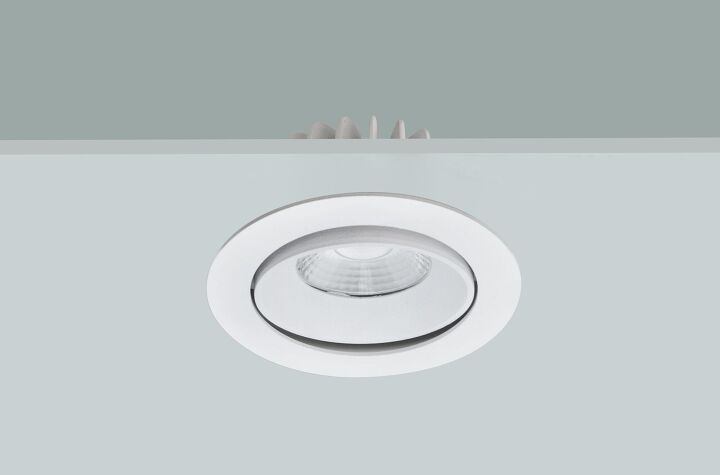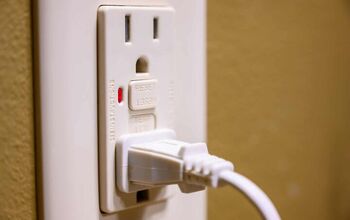LED Can Lights Buzzing? (Possible Causes & Fixes)

LED lights are more popular than ever because of their energy efficiency and availability. Many homeowners install LED can lights because of how low-maintenance they are, that is, until something goes wrong. So, why are your LED can lights buzzing?
Incompatibility between the driver and dimmer can explain your LED can lights buzzing. Loose wires will cause LED can lights to buzz and flicker until you tighten them. Make sure that your bulb is compatible with the fixture and that there is no EM interference from too many devices on the circuit if your LED can lights are buzzing.
Buzzing sounds are normal for many light fixtures, but it is less common with LEDs. Luckily, most of these problems come with a quick fix such as limiting how many devices you run on a circuit. Follow along as we explore what you can do about LED can lights buzzing.
Do You Need to Hire an Electrician?
Get free, zero-commitment quotes from pro contractors near you.

LED Can Lights Buzzing
You should never ignore LED can lights buzzing, even if it isn’t usually a big deal. Buzzing sounds can indicate a problem with the bulb, wiring, or EM interference. Let’s take a look at the main causes and solutions for LED can lights buzzing.
1. Incompatibility
It is easy to fix buzzing LED can lights if there is an incompatibility issue. Incompatibility between your LED can light driver and dimmer can cause it to buzz. LED lights don’t dim in the same way that incandescents do.
You will stain your LED can light’s driver if you cut off a section of the waveform. This will leave the driver incompatible with the dimmer and reduce the bulb’s lifespan. Your LED can lights will continue to buzz and hum until you get a dimmer that is compatible with the driver.
Refer to the manual that your LED can lights came with or contact the manufacturer. They will be able to provide a list of compatible dimmers to eliminate the buzzing sound. Replace your existing dimmer switches with a set that is compatible with your LED can lights.
2. Loose Wires
Loose wires in your LED can lights can be as dangerous as they are annoying. The wires between the bulb and socket or the rest of the fixture are critical, but they are also sensitive. Your LED can lights will likely flicker and produce a buzzing sound if the wires are loose.
The only way to fix this problem is to open the fixture, remove the bulb, and tighten the wires. Make sure to shut off power to the can lights before you adjust the wires for safety purposes. Tighten all of the screws before you put the bulb back and close the fixture because loose screws can cause buzzing as well.
3. EM Interference
EM interference occurs when there are too many appliances on one circuit. The extra toll of each electrical device on the circuit can weaken the strength of other devices, such as LED can lights. Interference can explain your LED can lights buzzing or flickering.
You can narrow the buzzing down to EM interference if you pay attention to what devices you run when it occurs. If the buzzing occurs when you run the washing machine or microwave, you can tell that there is interference. The best solution is to limit how many devices and appliances you run on a single circuit.
Either move the LED can lights to a circuit that you use less or unplug other devices. If your LED can lights continue buzzing, you can tell that there is another problem such as loose wires or incompatibility.
4. Defective Bulb
You can tell that your bulb is defective if you find nothing else wrong with your LED can lights. A bulb that is close to death is more likely to buzz and flicker. It is also possible to buy a defective LED bulb that you won’t realize is bad until you find your LED can lights buzzing.
Luckily, this is the easiest fix because you simply need to replace the bulb. Make sure to buy an LED bulb that the manufacturer of your LED can lights endorses. Otherwise, you are more likely to get stuck with a buzzing, defective bulb again.
Are Buzzing LED Lights Dangerous?
Buzzing LED lights are not generally dangerous, but you should address them right away. The buzzing typically comes from an incompatibility with either the bulb or driver. However, it is important to inspect the wiring because loose or frayed wires can pose a fire hazard.
Buzzing sounds trace back to problems with the wiring in some cases which increases the risk of an electrical fire. Loose wires can cause power surges which can potentially cause a fire and damage other devices and appliances on the circuit. Hire a professional electrician to inspect and repair your LED light wires if you are worried about a fire.
Buzzing Fluorescent Lights Explained
As previously mentioned, buzzing is one of the most common issues that occur with fluorescent lights. While it may be the result of a faulty bulb or starter, it’s typically caused by an aging ballast. The ballast is the device that is used to regulate the voltage in a fluorescent bulb. Similar to incandescents, a lot of buzzing can come from re-striking problems in the fluorescent arc when the lamp is turned on and off.
Relentless re-striking occurs when a ballast or bulb ages can no longer properly regulate voltage. If simply replacing the lamp itself didn’t help, try replacing the ballast. Oftentimes, the ballast is noisier than any bulb. If you still have an older magnetic ballast or a ballast with any other noise rating than class-A, it’s inevitable that you’ll hear humming. Magnetic ballasts feature metal plates that can vibrate and an intense electromagnetic field, each of which can generate humming.
In this case, upgrading the ballast to a more modern electrical ballast or one that has a class-A rating can decrease or eliminate the hum completely.
Humming Incandescent Lights Explained
Although incandescent bulbs are typically very quiet lights, when they do hum is usually caused by a dimmer installed on the same line. Triode for AC, or TRIAC, dimming is the most common dimmer switch for incandescents. These dimmers remove a portion of the voltage from the line in order to decrease the amount of energy that reaches the bulb, which results in a constant on/off switching for the bulb that dims the output of light.
The constant application and elimination of voltage excites and cools the filament in the bulb, resulting in vibration, which can cause that annoying humming or buzzing sound. To correct the issue, you can upgrade to a rough service bulb that has more supported filament. This will reduce the vibration and eliminate the hum. A 130-volt bulb can also be used as it has a thicker filament to help lessen the buzzing.
Another way to reduce or eradicate the vibration is to swap out the dimmer switch. If the dimmer is operating at maximum wattage capacity, the internal wires may heat up and buzz. In this case, it’s recommended to either use lower-wattage bulbs or switch the dimmer for one with a higher wattage rating.
Do You Need to Hire an Electrician?
Get free, zero-commitment quotes from pro contractors near you.

Final Thoughts
Aside from compatibility issues, faulty bulbs, loose wiring, and other appliances, additional elements of your lighting can cause buzzing. The most dangerous problem is electrical shorts. Small shorts in the wires or carbon build-up on electrical contacts can result in electrical humming or buzzing.
Regardless of the cause of the buzzing, fixing the problem is relatively simple. Solutions range from an easy bulb replacement to more pricey measures like swapping out a dimmer or switching circuits.
Related Articles

Jessica considers herself a home improvement and design enthusiast. She grew up surrounded by constant home improvement projects and owes most of what she knows to helping her dad renovate her childhood home. Being a Los Angeles resident, Jessica spends a lot of her time looking for her next DIY project and sharing her love for home design.
More by Jessica Stone



























